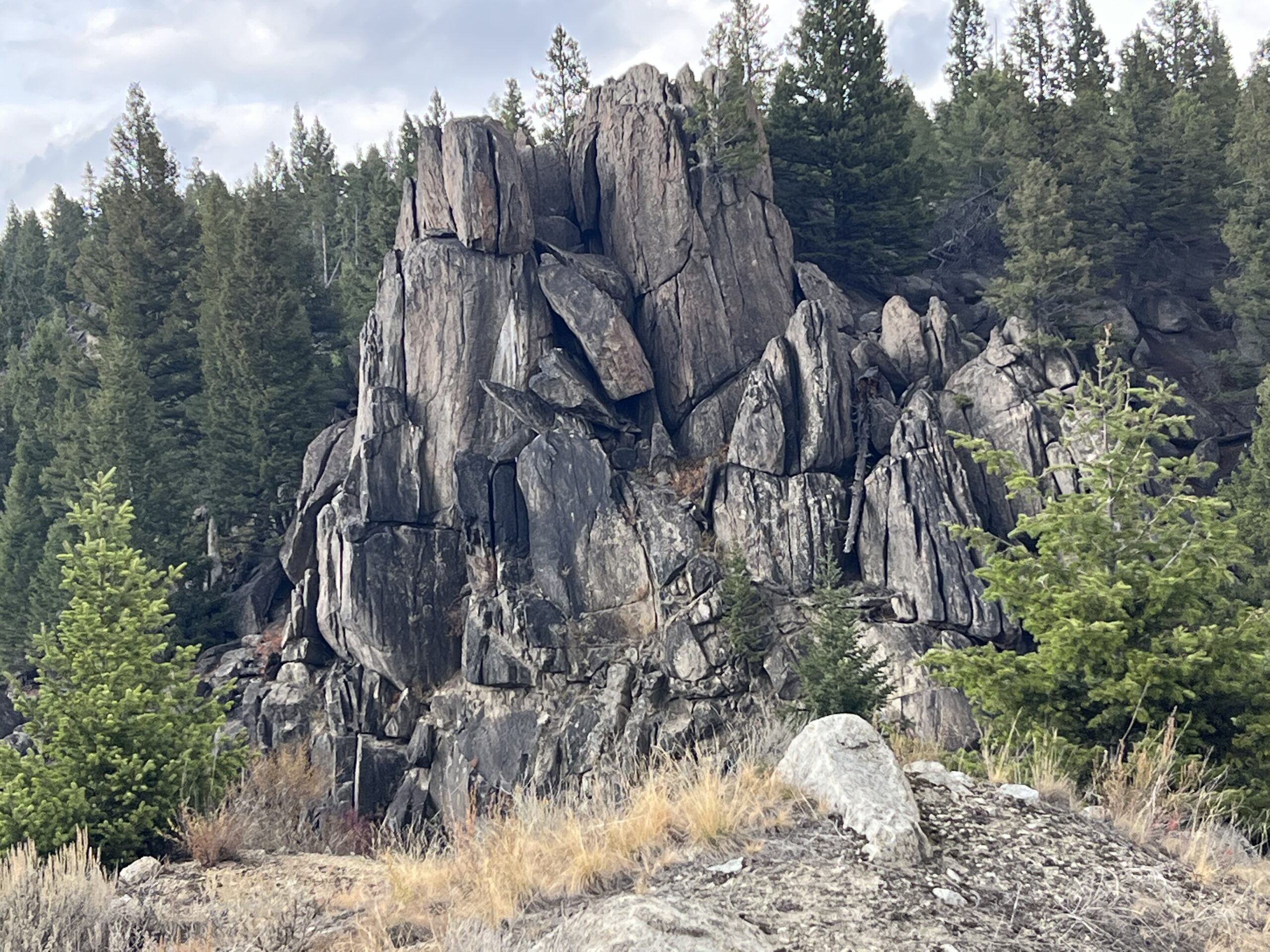Protology is the study of “first things.” First things refers to whatever information we have in Scripture about things before creation, at creation, and immediately following creation.1 Just as eschatology is the study of “last things,” things related to the end of time, protology is the study of things before, and at, the beginning of time.
As I mentioned in my last essay, there is an imbalance between the two. Much weight is put on eschatology, and rightly so, but almost none is put on protology. The result is a shot-in-the-dark approach to understanding why God created the world, and how that informs His purpose throughout time, and into eternity. That guess-work has produced some very shoddy theologies that cannot hold up under biblical scrutiny. The result of that is an unsanctified church that does not know her Father’s will.
My goal in this essay is to begin to explain in greater detail exactly what happened before creation which motivated the forming of creation itself. In doing that, we will also deal with God’s purpose, motives, and plan for all things. The Bible does give us that information. And the church is the steward of that information, a stewardship that is not being handled properly.
The Problems With Modern Theology
Dispensationalism has no real answer for the question, “What was God’s purpose for creating the world?” The most oft response is, “It was created for His glory.” This is a true statement, but the answer appears more of a catch-all phrase used when you really don’t know the answer. It is akin to the term “pan-millennialism” when asked about eschatology; “It will all pan out in the end.” Well, in reality, that is no answer.
Covenantalists believe there was a council, or series of councils, in which the Father, Son, and Holy Spirit worked out the plan and roles of creation and redemption by pact, or “covenant.” They claim that God covenanted the various aspects of which One of God would be the Redeemer, Regenerator, and the Initiator of redemption of sinners. It was decided by “pact,” or covenant in the eternal councils before time.
That is no answer either since the information for such a council, or councils, is scant. It is obvious that there was some kind of conversation within God that produced the existence of the world, and permitted the fall in order to manufacture redemption. These monumental things simply don’t happen by accident. However, their answer is no answer either since the ideals of a pact and the details imagined by Covenantalists simply don’t comport with the revelation of Scripture.
Some Dispensationalists even affirm such covenants as above simply by concession, and not by evidence. It is unfortunate that some Dispensationalists concede such ideals when they know very well that the fruit of such a system is not consistent with Scripture (i.e. infant baptism, replacement/fulfillment of Israel with the church, Amillennialism/Postmillennialism, etc). But, since they haven’t been able to discover the information necessary to understand what actually happened in God to motivate the creation of the world, and the activities of redemption, they simply set aside convictions against the covenants of Covenant Theology and move on to the debates of more sure footing.
However, this is not necessary. It is not necessary for Dispensationalists to hand over what is arguably the most critical and fundamental aspect of theology, the study of first things, simply for concession. As one who has for at least 30 years grappled with the doctrines, problems, successes, and failures of Dispensationalism and Covenant Theology, I can tell you that we have a definitive piece of revelation in Scripture, a theological “smoking gun” if you will, that fills in the ethereal “all things are for the glory of God” statement with data. These data, which I will produce in this series, is enough to rewrite, and revise, a proper and true theology that is consistent with Scripture throughout. For that I am excited! I am excited because this means that more questions can be answered, greater clarity can be had, Truth can be more definitively understood, and God’s plan, being understood in greater detail, can give Him the due glory in greater measure.
Before “In the Beginning”
Ge 1:1 In the beginning God created the heavens and the earth. (Genesis 1:1, LSB)
At the beginning of the first day of the six days of the creation week, the seventh day being the creation of a day of rest since God rested from His creation work, God created the heavens and the earth. I believe that this is a statement of the creation of the dark matter in the cosmos and our planet before the land appeared out of water. The creation of the heavens and the earth started the creation clock ticking. Since that time, God has been working (John 5:17), working His purpose in history and time.
But, what is that purpose? What was the motivation for creating the heavens and the earth, and filling them with the stellar bodies, creatures, and ultimately the man and woman? Is there a motive that can be read and understood in the proper reading of Scripture?
Yes.
Foundation
Jesus gives us His Word concerning the creation of the man, Adam, and the subsequent fall of Adam by work of Satan. This is found in the parable section of Matthew 13. There, along with other parables meant to describe and explain the Kingdom of Heaven in light of its impending mystery form, Jesus tells us what happened in Genesis 1-3.
I am referring to the parable of the Tares and the Wheat (Matthew 13:24-30). That parable contains a detail that is unique to Tare and Wheat parable alone. The tense of the verb that Matthew records there is unique, and significant. Although the verb is repeated in all seven parables of Matthew 13, only in v.24 is the verb aorist passive indicative. Those three terms indicate for us a lot of information.
Aorist
A.T. Robertson wrote the definitive work on Koine Greek, the language of the New Testament (NT). When addressing the issues surrounding the aorist “tense,” he wrote:
“It is true that in the expression of past time in the indicative and with all the other moods, the aorist is the tense used as a matter of course, unless there was special reason for using some other tense.”2
However, the sense of past time action is not in the aorist tense. Aorist indicates “punctiliar” action, and can be further divided into tense, as it were, from a combination of the stem of the verb, the context, and the aorist vs. other tenses used. To get to the point, when the aorist tense is used, and it wants to describe an action in the past, which is the default mood to show that as per the above quote, we call it the “ingressive aorist.” That is, the aorist is describing the action, or state, of the verb as having begun in the past at some point in time.
Passive
When a verb is wanting to describe an action that happens to a subject, it is in the passive. If I hit a ball, that is active. I hit the ball. However, it is a different matter if the ball hit me; I was hit by the ball. The second example is passive. The ball hit me, and it hurt.
The verb Jesus used in Matthew 13:24 is passive. The subject of the verb is the Kingdom of Heaven. The subject is acted upon by the verb, which, in this case, is a description of the subject, the Kingdom.
Indicative
In Greek grammar, this is called the “mood” of the verb. It tells us the kind of statement something is. It is the “mood” of the verb that is on display. Indicative mood tells us that the verb is a statement, a factual idea indicating a fact of something. There are other moods that describe other kinds of things and descriptions of the subject.
Summary
I took the time to look at some of the skeleton of the verse. I also took some liberties to explain things that most don’t readily see in the text, unless they know Greek. But, I did this in order to try and give some justification for what I am about to say, and to have opportunity for scrutiny from those who know Greek better than I do.
The summary of Jesus’ words in Matthew 13:24-30 is this:
“The Kingdom of Heaven was/began to be like…” The parable goes on to describe various aspects of the Kingdom of Heaven. Its original intention was for the sons of God to grow and thrive, like wheat plants in a field.
But, an enemy of the farmer planted weeds in the field of the wheat, forcing the farmer to wait until the harvest to separate them lest the wheat gets accidentally damaged, and the crop is ruined.
The metaphor is explained to the disciples, and us, that each component in the parable corresponds to an actual historical person, or object.
The sum of Jesus’ teaching is that the Son of Man created man to live on the earth with Him. The Devil came and introduced sons of his own. These two populate the earth from that point forward.
The Kingdom of Heaven, then, was the original creation as recorded in Genesis 1:1-2. The fall of Adam was the introduction of evil into the Kingdom, as recorded in Genesis 3. Currently, in the Kingdom, which refers to the creation of man and the earth (Psalm 2:8), there are sons of God (i.e. elect), and the sons of the devil (i.e. non-elect). The sons of God were determined by Father, and created for the Son, to exist forever in the Kingdom.3
Conclusion
To end this essay, we just need to see a few things. First, the Kingdom of God was the original design of God, recorded for us in Genesis 1-2. Next, God created the earth for the sons of God to live with Him forever.4 Finally, that design was corrupted by the enemy of God, Satan. His work caused God to take the life of Adam and Eve. Satan effectively ruled the world, the kingdom, from that point.5
- On the basis of the inerrancy of Scripture, and the dubious character of extra-biblical accounts of creation (i.e. Enuma Elish), I reject all supposed creation accounts extant in the cultures of the Ancient Near East. ↩
- A. T. Robertson, A Grammar of the Greek New Testament in the Light of Historical Research (Logos Bible Software, 2006), 831. ↩
- See Revelation 22:5 for some evidence that ruling, reigning, with God (v.3) was the original design of God since the eternal end result was just that. ↩
- See Luke 3:38 ↩
- Luke 4:6; cp. 1 John 5:19 ↩








